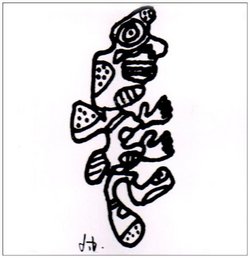| All Artists: The Neoteric Orchestra Jasun Martz Title: JASUN MARTZ The Pillory Members Wishing: 0 Total Copies: 0 Label: Under The Asphalt Release Date: 12/1/2006 Genre: Dance & Electronic Style: Electronica Number of Discs: 1 SwapaCD Credits: 1 UPC: 883629143569 |
Search - The Neoteric Orchestra Jasun Martz :: JASUN MARTZ The Pillory
 | The Neoteric Orchestra Jasun Martz JASUN MARTZ The Pillory Genre: Dance & Electronic
|
Larger Image |
CD Details |
CD ReviewsTotally unreal! BENJAMIN MILER | Veneta, Oregon | 01/14/2009 (5 out of 5 stars) "Jasun Martz is an American who released this completely unreal album in 1978 called The Pillory on the All Ears label (a short-lived Los Angeles-based label), on clear vinyl. It was later reissued in 1981 on some small label, and it first made its CD debut on the defunct Swedish label Ad Perpetuam Memoriam. Of course if you didn't get your copy when APM was in business, never fear, an American label, Under the Asphalt (apparently Jasun Martz's label, which is great, he would know his own work better than anyone else) made this available again, with the same bonus track, "In Light In Dark In Between". The Neoteric Orchestra features himself, with Ruth Underwood (Zappa, I believe this was her final musical adventure, as she pretty much retired from music since), Eddie Jobson (Curved Air, Roxy Music, Zappa, UK, and later Jethro Tull), and Paul Whitehead (the Genesis and Van der Graaf Generator album cover artist), and tons more, with choir, strings, as well as an assortment of keyboards, including none other the Mellotron! Jasun Martz is no stranger to the mainstream, including some real atrocities, he was said to help arrange the music to Starship's "We Built This City" (yikes!), and played for Michael Jackson (he provided keyboards on "Black and White") (he ended up having to apologize for "We Built This City", which I don't blame him for doing so, it's awful, and the ultra-slick production, the commercial approach, and synthesizers are simply appalling, it's what gave the 1980s a bad name for mainstream music). At least he also played for Zappa (hence the inclusion of Ruth Underwood on The Pillory). Nothing even remotely mainstream here, not when the influences here are the likes of King Crimson and Stravinsky. You won't mistake this for lite classical, and you won't mistake this for the Moody Blues that's for sure. The album starts off really sinister, so much so it would give King Crimson a run for their money! Then you hear this weird chanting, then some extended unaccompanied Mellotron certainly to blow you away. You'll hear some wailing sounds that were created from a bendable plastic tube you twirl around (they called it a "wind hose" in the credits, in which Jasun Martz himself is credited, along with his usual array of keyboards and percussion). Some really experimental percussion, then some grand organ, and some really majestic Mellotron passages (strings, brass, flute, choir). There's also this grandiose pipe organ passage that's truly out of this world. Actually this pipe organ actually turns out to be the seldom used pipe organ tron tapes! The GForce M-Tron has the tron pipe organ as part of their package and it sounds exactly like what I hear on this album. Cathedral (the '70s American band, that is) used a little tron pipe organ on their Stained Glass Stories album from around the same time period (you'll hear it on "Introspect"). There are times the Mellotron will reminds you of Crimson's "Devil's Triangle", but with an even more sinister feel. I really love how the music can be extremely sinister, and at other times peaceful (but you know that doomy sound is always lurking). The bonus cut is from an early '80s recording with a couple of Neoteric Orchestra members. This one has a more conventional chamber feel to it, lacking the Mellotron, although it still gets highly experimental.
In 2004, Jason Martz recorded a sequel called The Pillory/The Battle, which was released in 2005, which is even more ambitious than ever before, with a 115 piece orchestra (but the only familiar face helping out here would be Mark Shreeve, one of Britain's top electronic/New Age musicians). You'll have reminders of the original, but also explorations of world music, industrial, noise, ambient, and so on. Unfortunately the Mellotron this time around is a virtual Mellotron (like the M-Tron) (Andy Thompson, who runs the Planet Mellotron website was to lend a hand in the album, but he didn't have the time, if he did, a real Mellotron would be used on that sequel). But it's nice to see the 1978 original is available once again, and I really suggest you get this if you never got to hear this odd album before. This is simply one of the most unbelievable pieces of music I have ever heard! It's not your everyday prog rock, and the music leans much closer to avant garde classical. Fans of avant garde and prog rock fans who need something more out there should not go without this album!" |

 Track Listings (2) - Disc #1
Track Listings (2) - Disc #1